October Wrapup!
Woo~ooo~Ooo~Oooo it’s trick-or-treating niiiight. Which it wouldn’t be wiiiise to dooo~oo~oooOOO~~ because of the globaaal pandeeemiiiiiiic~ You know now I think of it, it is a little weird to not see more Zombie fiction set on Halloween where they have to work trick-or-treating into the plot somehow. Anyway!
It’s Halloween and it’s the end of October, so it’s time to run down what I got done this month in amongst many other things.
First of all, articles. We did some interesting and different stuff this month, didn’t we? First, there were my readings of Hp Lovecraft writings with some critical response afterwards; I read Facts Concerning the Late Arthur Jermyn, aka ‘My Ape Grandma’s Grandson Was A Racist’, The Colour out of Space, aka ‘Space is scary and hicks don’t know when to be afraid,’ Nemesis, aka ‘hey, not so much racism this time,’ and The Statement of Randolph Carter, aka ‘behold the ancient days of a century ago.’ These were fun to do and reasonably easy, so if you want this kind of stuff, I’ll consider doing more readings on theme months.
I interviewed Erik the Bearik about Brinkwood: Blood of Tyrants, and that was lots of fun. I vented for a bit about ‘ghost hunters‘ and ‘real mystery‘ media, where I pulled my punches and avoided swearing about exploitative nonsense. I also wrote some companion pieces to my SCP Wiki video (and we’ll get to that), where I listed some SCPs I dislike and some I like.
I also did something special this month with videos! Since I’d been doing a lot of experimenting with video this year, I figured I’d bring them together and do five ‘different’ kinds of video.
For Halloween Forever, I talked about the game and about my relationship to Halloween as a cute, fun thing to be enjoyed. This was done by playing the video, then unscriptedly talking about the way the game made me feel. This was really easy to do!
For the SCP wiki, I made a simple video of a series of animations with minimal visual data, but with useful, clear iconography. This works well for representing text media, so maybe this is how I’ll tackle text adventures going forwards. This was also scripted pretty thoroughly before I made the video.
For Scarlet Hollow, I made a very quick series of pan-and-scans over stills from the game, which worked out well for explaining the ways the game worked. This was lightly scripted, but I did do a fair bit of editing to get the right flow down. This meant I could promote the game on kickstarter in an appropriate window, instead of holding things up. This also helped overcome my big problem with visual novels, where I often feel like I’m ‘wasting’ the medium to use video and voice to talk about a primarily textual medium.
Finally, Ai: The Somnium Files is like one of your more typical ‘essay-ish’ type videos, though not using the game to make some greater point. I scripted it out, read it, then used a loop of gameplay visuals which I overlaid with graphics to present more information about the game. I was able to weave in video footage and some captioning, which worked out okay, and I liked it.
I think I just talk faster than most video essay people. This video script is 2200 words, and the video is about ten minutes – but a typical audio reading, according to audiobook resources, is around 150 words a minute. Ostensibly, this should mean that this video should be about 15 minutes if I just read slower.
I’ll have to work on that.
For Gloomwood, this was much simpler to make. I recorded myself playing the game, as is, the first time. Everything is here – me messing up, me learning game mechanics, me exploring how the game worked from record to end record.
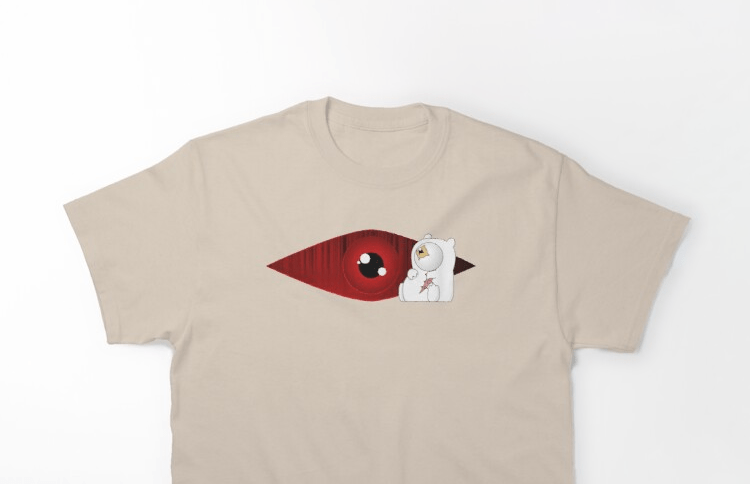 I also made a shirt this month! Then I was so happy with how one element on it worked out, I made it into a sticker!
I also made a shirt this month! Then I was so happy with how one element on it worked out, I made it into a sticker!
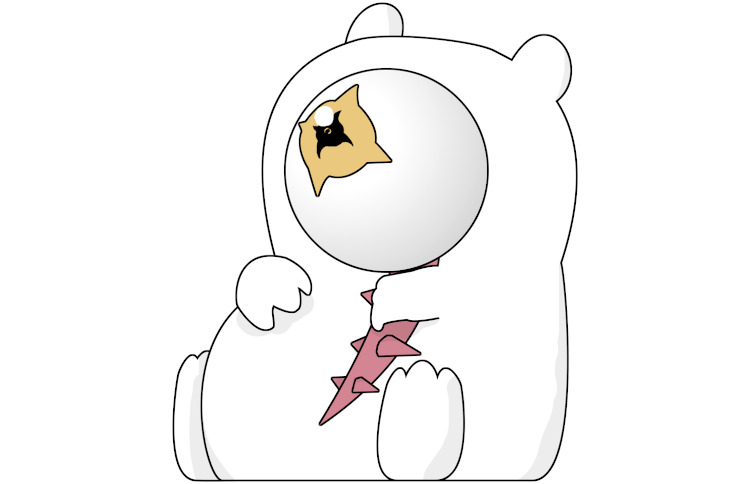
Aiba is a real sweetheart of a character, and I’m really glad to have gotten to play this game. When I make shirts and stickers, it’s often as ‘merch’ of my interests, and so this time I’m glad to be able to make merch of my love of this game.
And finally, personal life stuff? Well, October was busy – I’ve been marking pretty much every week of the month, and the marking has taken up a lot of time. I have a lot of students this semester, and they’re under a lot of stress, which has meant there’s been a lot of late-night mix-ups, or two AM calls from students worrying about how to get things working.
October was nonetheless a lovely month to catch up with some movies and shows I really liked, it was a wonderful experience in video making, and I enjoyed my recordings as well. Let me know if any of the content this month stood out to you as a fave and I’ll see what I can do going forward.
Game Pile: Gloomwood
Camp Osum Month Diary
For Asylum Jam 2017, I made a horror game based around that jam’s theme of a zero sum game. My game was very, very quickly made; I documented the process to an extent at the time. Since then I’ve sat it in a drawer and kind of ignored it.
The game at its core is a drafting game, but it’s not a simultaneous drafting game. The game works on a kind of draft I learned as rochester draft; you lay out all the cards on the table, in a grid, and players make choices one at a time, in a circle around the table. These stacks are weighted, so that in each stack, there’s a card that represents the ‘monster’ in this setting. The monster in this story is meant to be a sort of slasher movie monster ala Jason. As players die, they become ghosts, and those ghosts then get to haunt and complicate things for the remaining player, who is trying to escape.
I really like this simple little engine, and I like the way all the pieces work; with three ghosts at the table it can be really hard for the remaining player to pick their way through the stacks of cards that may or may not be boobytrapped by earlier player action. Players want to try and sabotage one another, but they don’t want to make their own potential future as the final player one of immediate defeat, either. The whole idea behind the game is that all victory is a zero sum game: You can only win when either everyone ‘loses’ or when all the other players have lost – and that’s the inspiration for the name, Camp Osum (0-Sum).
I’ve been thinking about revamping this game as a little October release, and I thought I’d give a shot of making the game use pixel art.
- There are a few asset packs I already own for horror RPGs
- These assets often focus on backgrounds, a thing I find the most difficult
- Consistently done pixel art can be really rewarding and nostalgic
- The game’s mechanics are tense, the game’s art doesn’t have to try and horrify
With that in mind (and I started this back in the first week of October), I’m going to do something a little different here and include a set of pictures from when I worked on this idea each point through the month.
Lovecraft Readings #4: The Statement of Randolph Carter

This month I’m going to take some time to read to you my ””’favourite””’ Lovecraft stories, then talk to you a little bit about them afterwards. Because this is Lovecraft, each of these stories deserves a content warning for general horror, but in this one specifically, uh
Huh
Actually, this one’s not actually super racist?
Neat!
October Shirt: Ai To Ai
This month and some of last, I played Ai: The Somnium Files. I played it, and I liked it, and I liked it so much I thought about going and buying some merch for it.
There is no official merch for it.
Normally, I’d wait until con season and keep an eye out for Ai: The Somnium Files fanmerch, maybe a print or if I’m really lucky, a keychain of a character like, oh, Aiba’s little teddy bear form would make a great keychain design. I want one of those.
Oh wait, it’s 2020. No con season.
Sigh.
Fuck it, I’ll do it myself.
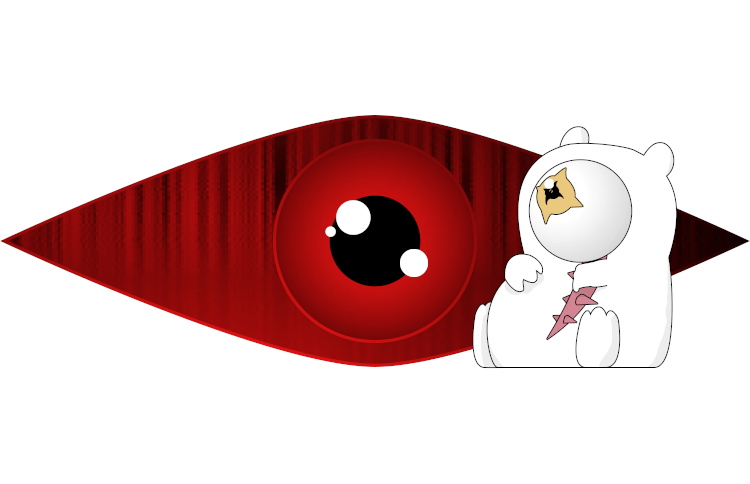
Here’s the design. It’s an eye, with Aiba, which is part of the general symbolism hammerblowing that is Ai: The Somnium Files. Here, it is, on a shirt, you can use to conceal your body:

But, but, but, what if you don’t want a shirt, but just want a sticker of Aiba to stick on things that matter to you, to mark them as your territory? Well, I made this:

Story Pile: The Thing
You know, if you look at the media I talk about on this blog, especially as it pertains to horror, you might not realise that I have spent quite a lot of time watching horror movies and series that are, generally, just all bad.
It’s not that I’m averse to watching classics, I just haven’t largely gotten around to them, and so I want you to imagine my reaction to finally having a point of contrast with a range of boring, tedious and exceptionally shithouse movies by watching at least one movie that is in fact, good.
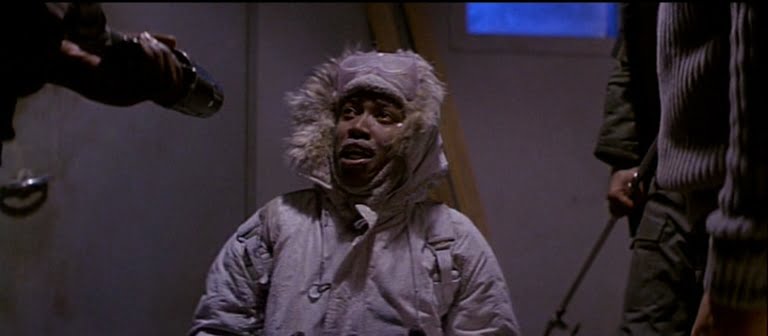
MTG: Inevitability and Horror
Magic has done a few different sets that try for horror.
Continue Reading →How To Be: The Castlevania Gang (In 4e D&D)
In How To Be we’re going to look at a variety of characters from Not D&D and conceptualise how you might go about making a version of that character in the form of D&D that matters on this blog, D&D 4th Edition. Our guidelines are as follows:
- This is going to be a brief rundown of ways to make a character that ‘feels’ like the source character
- This isn’t meant to be comprehensive or authoritative but as a creative exercise
- While not every character can work immediately out of the box, the aim is to make sure they have a character ‘feel’ as soon as possible
- The character has to have the ‘feeling’ of the character by at least midway through Heroic
When building characters in 4th Edition it’s worth remembering that there are a lot of different ways to do the same basic thing. This isn’t going to be comprehensive, or even particularly fleshed out, and instead give you some places to start when you want to make something.
Another thing to remember is that 4e characters tend to be more about collected interactions of groups of things – it’s not that you get a build with specific rules about what you have to take, and when, and why, like you’re lockpicking your way through a design in the hopes of getting an overlap eventually. Character building is about packages, not programs, and we’ll talk about some packages and reference them going forwards.
Alright, let’s look at these three.
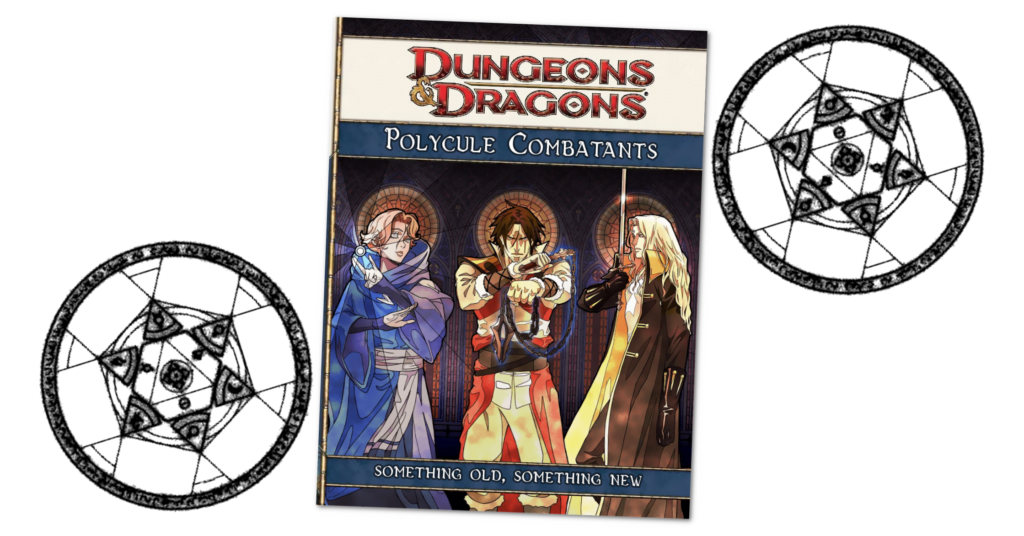
Game Pile: Ai: The Somnium Files
This text is here to try and keep Jetpack from just linking straight to the video.
5 Ways To Be Cosmically Horrifying in 4E D&D
It is easy perhaps to forget that TTRPGs are a fundamentally creative space. In some games, especially the more modern indie style of TTRPG, characters are often handed a role that really paints the way they should feel, a characterisation that is in some cases extremely specific, like you’ll see in PBTA games. In D&D, there’s a lot of ways in recent days that flavour has swung towards specificity, which can limit the kinds of creativity you can express.
4e D&D is a game system that deliberately tries to leave a lot of your flavour up to you. Last year I talked about some character options that let you be horrifying heroes. This year, we’re going to do that again, but instead of gothic horror, we’re going to look at ways to do cosmic horror with your character that swings a big axe and saves the day.
Cosmic horror in this case refers to the horror felt at the boundaries between human agency and universal indifference. Cosmic horror can be felt in a very mundane, normal moment of life when you look up at the sky and realise that there is more that exists that you’ll never see, that the universe is old in a scale that you will never understand and will live on longer than you will ever be able to conceive, and that these two details make you a nothing of a blip between nothing blips. When we talk about cosmic horror as she is shown in media, it’s often about trying to show you those points of interface: Of the horror that Lovecraft himself said,
“Now all my tales are based on the fundamental premise that common human laws and interests and emotions have no validity or significance in the vast cosmos-at-large.”
The horror of the Cosmic is not the threat of Gothic horror. It is the immense indifference of an uncaring, infinite emptiness.
Continue Reading →Lovecraft Readings #3: Nemesis
This month I’m going to take some time to read to you my ””’favourite””’ Lovecraft works, then talk to you a little bit about them afterwards. Because this is Lovecraft, each of these stories deserves a content warning for general horror. In this one, because it’s a poem, it’s surprisingly, slur free!
Hunter’s Dream – Building Encounters (Actually)
This is more work on Hunter’s Dream, a 4th Edition D&D-compatible mod made to enable a Bloodborne style of game, where players take on the role of hunters, who have to first research their prey before going out to the tactical combat stage of things where players get to have cool fights with werewolves and whatnot.

Story Pile: Black Spot
This series is not called Black Spot.

10 SCPs That Talen Actually Likes
Gosh yesterday was full of opinions, wasn’t it? I said some mean things about a website! And maybe even someone who liked that website might have thought: He doesn’t like that thing! But I like that thing! and had a whole moment to reconcile with themselves. Who knows.
But I do say that there’s writing I like on the SCP wiki, so now I’ve had my fun pointing out how entire categories of media on the wiki are tedious as hell or needlessly interested in hurting women, I am now obligated by the Centrist Bullshit Rules Of Not Being Mean To Websites On The Internet to point out things on that website that I like, for fear that me having a preference will be seen as ‘problematic’ or ‘he didn’t really get it’ or ‘I don’t think you’re giving it a fair chance.’Fifthism
Fifthism is an idea that spreads across a couple of SCPs in the wiki, some of which are bad, and some of which are kinda cool. The idea at the root of it, though, is that there’s essentially a kind of a cult, or a haunted idea, or some kind of anomalous religious space (what we in the business call a memeplex), and the result is not that it has a religious following, but rather that the Fifthists create anomalous religious groups.
I, perhaps for reasons that don’t click for you, find this idea of a kind of memetic predation on a pattern of behaviour people have to be super interesting, and the credulity of people in that space is neat. And it also means that people get to write about nonsense religions and flex their muscles a little instead of just writing about the Abrahamic faiths and Greek and Roman myth (though, you know, hold on there).
The Fey
The Fey are one of those places where the SCP foundation’s whole framing is weaponised against them: The Fey presented in SCP 4000 play on a trope from stories of the fey, which themselves build on the idea that ‘Gaelic myth was never written down.’ There’s this idea that Fey and the Fair Folk do something with names, and the SCP foundation are scientifically minded enough to recognise that over time in human usage, any title or adjective becomes a name, and therefore they have to write their containment procedures minimalising the chance that these names will form.
There’s also a good joke about how editors handle how difficult this SCP procedure would be to write.
I find the fair folk interesting because they present a challenge to be spoken about, and they do reiterate on a thematic space that another SCP I like builds on which iiiiiis:
Bigfoot
This is a really good idea, wielded well. The basic idea is that sasquatch exist, in the wilds, and you need to avoid them because they have a terrible virus that can kill about thirty percent of all humans that even look at them. That’s weird and fits the existing SCP universe, and it’s a really believable ‘that’s all’ point that you can imagine a character in the universe being satisfied.
Then you have the further development, expanding on it, until you eventually cross the threshold of available information and the mask slips and you find out that the Bigfoots are the last remnants of a prehuman civilisation, who ran a shimmering, golden empire of biological super-science all across the face of the Earth. Then there was a revolution, they were overthrown, and now they’re asking to come back in, because they have forgiven us.
This is really interesting to me, because on the one hand, there’s room for an actual enormous civilisational disappearance in our earth’s history. Civilisation is fragile, it can disappear, it can be disappeared. Also, there’s a cycle of violence where the bigfoots were overthrown, but also overthrew their forebears too. It creates a vision of the cycle of violence in our own civilisations, without saying ‘those other humans are just as bad as us.’
Bigfoots are an overthrown colonial power that wants to ‘make good’ but isn’t doing it in a way we can meaningfully trust, because it’s hard to talk about solutions on the scale of civilisation. I mean, an abuser is standing outside, insisting to be let in: When do you extend trust?
3 Moons Initiative
I like the 3 Moons Initative as both an attempt to replicate a benevolent heavenly benefactor within the SCP universe and also the enormous challenges doing so. The 3 Moons are genuinely trying to be a net positive, but between the layers of secrecy erected by the different conspiracies, and the difficulty of being dead. Every faction that isn’t the SCP foundation in the SCP universe is treated as being kinda wrong and stupid, but even through that filter I have a hard time dismissing the intentions and hopes of the 3 Moons Initiative.
Also their motto is just the perfect kind of badass boast that is also kinda tone deaf about how creepy they sound.
Racism
Buried in the list of ‘explained’ SCPs is this idea of an SCP from the earliest days before the foundation came into existence, which was an attempt to catalogue the way that slaves seemed to want to escape slavery rather than accept their ‘natural’ state the way that slaves should. The whole thing is framed as a scientific examination of a phenomenon with containment procedures and some possible explanations, but also about how the individuals considered were used in human experimentation.
This is an excellent SCP because it’s both historically accurate – that there were attempts to treat slavery as ‘a science’ and black people have endlessly been used as test subjects by oppressor science – and that it shows that the SCP foundation is an entity made and maintained by people. The previous organisation that made these papers tried to codify their prejudice with science, and even if now they can, with their super science, recognise that this is just that, they still have the records, on file, because they need to keep track of what they did.
Pattern Screamers
These are a good weird science boogeynonsense thing. The idea that order is something humans impose on the universe by observing patterns, and that the universe itself doesn’t have them, and the tension between the imposition and the actuality is space where something can happen is an extremely good, interesting space to create horror monsters out of that isn’t just delving into Lovecraft’s space of ‘what if we know things, but too much?’
Pattern screamers are also good in that they are extremely hard to explain; they dabble in the quantum that was discovered and popularised after Lovecraft died, not in the ocean or outer space which he feared in his lifetime. With quantum, you have room for a lot of nonsense, but pattern screamers aren’t a thing that was already there and waiting to be found; they’re things created by humans, unconsciously, but created by us.
Some of the stuff that relates to them, like deep time and universal reboots? A bit boring. But the core idea of a special kind of horror that comes from demanding things make sense is good to metaphorise.
Nose Crabs
I like these as just a neat little cryptid with a reasonably explicable but also deeply unsettling reproductive system. Things like this exist in other species – parasites that afflict a variety of other creatures – and the nose crabs are only weird in that they’re really unsettling and limited to a small location. Containing this kind of species is a very doable thing, and the reason to do so is because just knowing these things exist at all could get some really problematic behaviours. They’re essentially a parasitic species that can have large-ranging health implications and that nobody needs to know exists, so, keep it contained. I like this especially because it doesn’t need to be too anomalous to be just weird enough that it’s worth keeping separate from society.
The Brain That Ate Itself
And here’s another, much weirder idea. The notion in SCP 3513 is a place you pass through, and once you do, you get a break grow in your brain and start to eat it until you die. This, by necessity, is extraordinarily hard to study and the attempts to study it have proven fruitless. I like this because the weird and eerie nature of the story makes it hard to study, so they study it until it gets to be too hard. The fact that there’s a point where the foundation just gives up is important. It’s very much ‘my finger hurts when I do this – so don’t do that.’
If you go into this area, you get a brain beak. So, keep people out.
I love how simple it is? Like, the limit of curiosity is ‘this is hard to look at, it doesn’t seem to yield anything, so let’s just stop people from dying by going there and leave the rest of it alone.’
Are We Cool Yet
Art changes the world. Are We Cool Yet are the example of one of those kind of things that would happen in an anomalous universe – people devising strange ways to interact with the anomalous for the sake of creating that art. It’s nice because normally this stuff is treated as being ‘science’ stuff, so science research is done. AWCY is instead an attempt to render a pretty reasonable representation of what art movements might do in a world with a real global conspiracy and less tactile boundaries of reality.
It also helps that they seem to do a lot of things that are contrary to the fascist behaviour of groups like the Global Occult Coalition or the SCP foundation themselves. These organisations have functionally unlimited spending and operate completely in secret with the endorsement of world governments, for your own good – Are We Cool Yet are the street artists demanding that reality be presented as it is to the people who had no say in their imprisonment.
The Deer
I really like this one, and I dislike reality warping, and needless sexual violence, what gives? If you’re not familiar with The Deer, SCP 2845, the containment procedures open with an extremely detailed list of containment procedures. These procedures are in some cases remarkably specific, including a need for the commercial value of goods to be tracked with a price limit of $4.28. It also deliberately presents this in a particularly high-volume way that can make the details occasionally confusing to parse – like how the chamber the Deer is kept in is at -110 degrees celsius. Reading the SCP in a single run, you’re likely to have a hard time putting all these details into a meaningful, shared context. There’s even a bit of political sniping about these procedures. Then there’s an entity as described, which is a deer, capable of doing basically whatever it wants any time it wants to do it, and the stunningly difficult process of containing it.
The Deer is Saturn.
Kinda.
It’s the Roman god Saturn, but run through a photocopier that jams a bit, so it’s got a bunch of details about it that are about the Roman god; some details are about Saturn, the planet; some details are about the process of the god as expressed in Roman myth; and some details don’t quite fit either. The Deer is ‘Saturn,’ but kinda. It’s a God, kinda. It’s not a God in the way that we treat Gods in our own myths, when we’re the ones writing the story and processing the fanfics of fanfics generations later. This is what in a face-to-face dealing, a God is like, and what dealing with it in our modern industrialised way, with forgotten and half-remembered truths is.
The Deer is interesting to me because it is both a hand grenade with a rusty pin, and its monstrous containment is representative of something that feels like an idea that started from a place other than ‘let’s write a story where a little girl gets tortured.’ It is a thing that has to be contained very carefully, where the need for containment is high enough to justify the dreadful cost of it, but where that cost can be treated coldly.
Fox has pointed out that the Deer is definitely in the too edgy basket, and I do agree: I think the narrative works just fine if you cut out the baby eating, because part of the point of the myth it’s drawing from is that the babies survive being eaten. Still, ‘I would revise it a few steps’ doesn’t change the fact that the deer is definitely doing something with its horrifying elements.
10 SCPs That Suck Ass
Oh oh ho! Time to get feisty! The SCP wiki is a big communal creative project. Lots of people have written for it. I have very pointedly gone out of my way to avoid knowing who made these ideas I’m talking about because I want to talk about the product that the SCP wiki exalts communally. I may talk about the intentions of a piece, but please understand they’re not drawn from actual stated words from the creators (except when they are) but rather from a critical reading of what these narratives are trying to be about.
And with that, on to the sacred cows.
Content warning! I’m going to talk about stuff on the SCP wiki that’s pretty bad, and that means in addition to warnings about horror, we’re also going to have to talk about sexual violence and child sexual assault.

The Plague Doctor is a Naruto OC
That’s not a joke, that’s literally where SCP-049 came from: The creator wanted to make a fanfic of a Naruto character they liked, and the eventual outcome is the Plague Doctor. The Plague Doctor is ‘beloved,’ according to votes and fan reactions to its appearances in other games (including contention when the ‘wrong’ voice actor explores the character). The Plague Doctor, like almost all the ‘evil doctors’ the SCP wiki has going on, is pretty much just a boring person.

“Reality Warpers”
These are all boring.
No, I don’t care to elaborate on why ‘literally any reliable cause and effect does not apply to this except as we, the storyteller impose on it’ is boring.
Yes, even the ones that are ‘about’ storytelling itself.

Most of the 001 proposals
There are essentially four basic 001 proposals:
- What if this well-established Abrahamic myth is just true?
- What if the biggest SCP is the SCP foundation?
- What if the biggest SCP is the SCP foundation, but the actual writers of the wiki IRL?
- What if the biggest SCP is the SCP foundation, but with evil mustaches?
I find every one of these deeply unsatisfying. Particularly, the idea that SCP-001 would be assigned to the most important SCP rather than the first SCP in this new sorting system is really underselling the way that the SCP foundation should be treated as a cold, heartless bureaucracy. The idea that ‘important’ numbers represent ‘important’ SCPs is such a waste.
There is ‘what if the sun goes evil’ but that feels less like a proposal of a terrible thing that’s being contained as much as it feels like ‘a story someone wanted to write’ as an end game for the SCP universe.
Anyway, the other thing is, these four ideas each kind of outline the fundamental biases of the SCP wiki; that when you put them to think up ‘the most dangerous thing’ they pretty much default to ‘Christian ideas,’ and ‘Us.’ It’s just kinda an example of how basic some of the base assumptions of the SCP universe are, and one of the ways that the place is still ultimately an outcropping of 4chan’s ‘we are multitudes (of extremely similar boring people).’
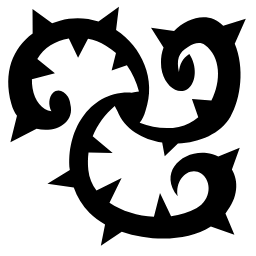
I Am The Centre Of Everything That Happens To Me
This is apprently a highly praised SCP, with the idea of ‘what if the real horror is me, the author, right now?’ which is
Fine, I guess.
The problem when you draw attention to the author of the work as part of the work is that you pretty quickly just wind up pointing at the writing process, and if you’ve encountered this story idea before, you’ll both recognise it and find this one pretty tedious. I mean there is a grain of truth to it – SCPs created just to make a horrifying scenario with no meaningful point or idea are incredibly boring and get stuck in tedious loops. But this one doesn’t break the loop.
It’s Inception, basically. ‘Look at how the method of storytelling I use looks, when metaphorised as a story with those tools.’ Woop de doo.

The Build A Bear
Oh hey, you know what’s really good at being horrifying? Pointless, unpredictable and entirely unjustifiable sexual violence against women! The SCP 1048 is ostensibly meant to be a jab at the idea of ‘safe’ SCPs, with the idea that some SCPs are treated as safe and the researchers get used to them and integrating them into their workplace life and culture, with this bear suggesting that every one of them is just waiting for the mishandling that results in them doing something terrible. That is, this SCP exists to mostly comment on other SCPs that make the world more interesting, to instead make it less interesting, and in the process, decided the best way to do it is to mangle fetuses.
Booooring
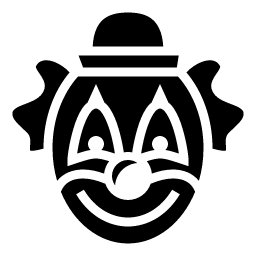
Every Creepy Or Evil Clown
Clowns are Boomer Detritus. The Clown as depicted in the genre of SCPs, a big nosed, fuzzy haired, big shoed horror thing, is an entity that does not meaningfully exist in my culture or in the culture of everyone I know, except as a thing to show up in contrast to be horrifying. It’s either clowns in hospitals (which largely, aren’t a thing), or Horror Monster Clowns. Real clowns these days don’t look like that because real clowns know those classic looks are creepy.
Horror monster clowns therefore invoke to me, John Wayne Gacy, and it’s pretty hard for anything you as a fictive writer can come up with that compares to the actual, literal, very real serial killer who actually did prey on people like me, and got away with it for a long time thanks to being, effectively, contained. Therefore, every time a clown is used to try and evoke horror, I get immediately bored and find something else to read. This extends as well to a lot of ‘kid media’ SCPs, like Cragglewood Park, which are all basically reiterations on an idea excellently done by Kris Straub’s creepypasta Candle Cove – what if our pliable childhood memories hid something horrible?
It’s kinda hard to shake me with that, in particular, because I have very real records of the horrifying media I was exposed to as a kid.

5555
If I’m already tired of meta narratives, imagine how boring I find the SCP that says not only is this a meta narrative, but it’s all just a game for fun? Hey, you know that stuff you were invested in and cared about? Well none of it matters, lol.
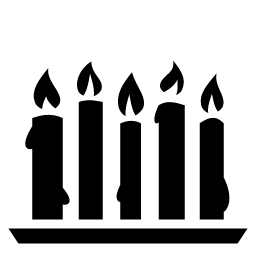
This is Where I Died
This ties in to my problem with the SCP-001 proposals that see ‘us, the people on the wiki, are the real SCP’ as meaningful horror. This SCP is built around an attempt from the narrative in universe to attack people, out here, in our universe, as readers of the work, and does it by giving you a kinda jump scare?
What you get instead is kinda an anthology with no actual central handle to it. Behold, a bunch of incomplete stories that we hope unsettle you, the reader, because if it does, boom, you’re affected by this story! And yeah, I guess from my place of experience, the idea that media affects people isn’t exactly exciting.

Blood and the Breaking of my Heart
When I talk about flags I often say ‘don’t put a good flag on your bad flag,’ to talk about when a flag uses a much better flag design that some other flag uses. In this case, SCP 5935 uses a really interesting space (SCP-4000) and tries to tell a story that’s a bit like the horror of a changeling, but it doesn’t actually touch on those beats, and it requires the humanisation and inner life of an 05 council member to be central to the story.
The O5 council are people I never want to see in a story. I do not want to know about the politics or the moral oversight or the perspectives or the supernatural powers of the O5 council because the second the beaurocracy of the SCP foundation is being made by people who have opinions and perspectives, you lose the headless, terrifying coldness of the organisation. You need to be lost in the SCP universe, otherwise you have to start asking questions like ‘why isn’t violent revolution against this fascist empire a good thing?’
In this, we get Sad Dad Feels which lead to Bad Dad Behaviour and is finally defeated by Heroic Dad Sadness and I do
not
fucking
care
about Dads that do bad things in the names of not fucking facing their own emotional limitations. We have enough stories about the harm that a selfish dad can do, all the way back to the Bible.

Everything To Do With The Scarlet King
That content warning up above goes double here, okay?
The Scarlet King narrative may not actually have started with SCP-231 (no linking, because fuck this story), but it is pretty much now the central point that other Scarlet King narratives orbit around. SCP-231 has been revised to now remove the oblique references to endless, institution-mandated child rape, but in doing so, also included commentary that it was never meant to be about that.
Nonetheless, this is about a child, under the age of 10, who is pregnant with a ‘thing’ and that thing is either the Scarlet King, or a servant of the Scarlet King, or a thing that keeps the Scarlet King sealed, we don’t know, we just know we need to keep abusing this little kid to keep things the way they currently are. The Scarlet King has a cult, there’s some really mediocre Biblical-inspired horror phrasing, and the actual outcome is deliberately vague beyond ‘it will be bad.’
And you don’t get to claim ‘it’s not about sexual violence against a child,’ when it starts with the premise of seven pregnant people one of whom is a child.
The whole thing feels like the ‘a wizard with a bomb says it’ll blow up the hospital if I don’t say the n-word’ writing, where a scenario was constructed to try and imagine the worst possible containment procedure, then doesn’t have anything to say or do beyond that. The irony is that one of my favourite SCPs works in a similar space and it’s actually interesting, more on that another time.
Also, as someone who grew up surrounded by actual Christian eschatology, the actual idea of the Scarlet King is fantastically dull. Attempts have been made to make the Scarlet King into something more abstract than ‘big, permanently lethal demon,’ but they’re all attempts to rehabilitate this concept that still, somehow, comes back to this point of intersection in an under-10 year old girl’s uterus.
Game Pile: The SCP Wiki
We Find Ourselves In Monsters
The first modern horror novel, the place we start drawing the line from, is Frankenstein, a book churned out in defiance against two of the most priviliged humans alive as a wrench to throw into their full-time fart sniffing conversation. Mary Shelley, grappling with the feelings of loss and distress from her own recent miscarriage and, we can kinda extrapolate the general pressure of interacting with her husband and George Gordon ‘Lord’ Byron, wrote a book about an overly self-invested self-satisfied so-smart softboy whose unbearable burden of genius resulted in him running roughshod on everyone around him and becoming, eventually, the victim of his own creation, something he could have averted had he spoken to someone about it for five fuckin seconds, but did not.
Lovecraft Readings #2: The Colour out of Space

This month I’m going to take some time to read to you my ””’favourite””’ Lovecraft stories, then talk to you a little bit about them afterwards. Because this is Lovecraft, each of these stories deserves a content warning for general horror, but in this one specifically features cosmic horror, ego death, loss of children, loss of parents, general sanism, some things that I think are going to be kinda trypophobia-inducing like people ‘crumbling’ and a lot of animal endangerment. There is also some mild racism, like, no slurs, and there’s a bunch of just casual sneering at poor people.
Five Reasons To Avoid The God Damned Ocean
Hey, you know that Cthluhu dude? That guy’s meant to make the ocean super scary, especially for white people. There could be anything down there in the ocean, like an existential threat to all of humanity that’s just waiting for a byproduct of human activity to render all life on earth permanently unsustainable, in the name of the worship of something profane and unnatural!
Lovecraft was a cop!
Thing is, he was scared of the ocean and didn’t have a clue what was actually in the ocean. Want to know why? Because if he did know about it, he’d have written about the much scarier things that are really there!
Here are five reasons the ocean is fucking terrifying!
Content warnings: Body horror, deep water, real big things! No pictures, because there’s a lot of AAAAA here.
Story Pile: Silent Hill Revelations 3D
The actual review of this movie is very short: It isn’t very good. The story doesn’t do anything to hold itself together very well. There are numerous points where the assumed truths of the story are changed, and you have to invent motivations to explain why characters behave the way they do. Kit Harington is in it. There’s a pretty cool spider made of mannequin bits. The 3d is absolutely unnecessary, now. I do not recommend this movie.

Credulously Boring ‘Real’ Mysteries
I kinda have a special hatred for a genre of Youtube content that’s meant to be about ‘real stories of the supernatural.’ At its finest you have well-regarded, personality-driven fun stories like Buzzfeed Unsolved, which gave rise to the eventual Watcher Network, or the absolute sprawling morass of creepypasta, spooky story, and
sigh
‘real supernatural investigation’ nonsense. There’s a lot of this stuff around, and if you just check out a few channels, your youtube recommendations will become full of comparable stupidity; some of it will be from horror stories, written by people who are largely trying to entertain and see themselves as fiction writers, and those people are largely fine, if incredibly boring, and then there are the other ones.
Sandy Peterson’s Wild Ride
If you’re at all familiar with me and my life you might be unsurprised to know that I don’t have a lot of respect for religion, just period. I think it runs straight through atheism (no belief in god) into an antitheism (that the idea of believing in a god is beneath human dignity) and maybe even veering hard into misotheism (the idea that god as ever expressed in the faith systems known to me is our moral inferior and if it were real, it would be our moral duty to find a way to kill it). I feel this most strongly about the faiths I know, mostly notably American Evangelical Christianity, but it folds outwards into all the Jesus-based faiths and cults, where I believe them to be quite wholly grown from poison root, gnarled in tree and branch. Courtesy of my Christian upbringing, I learned a lot about how all those other varieties of Christianity are evil, and even spent some time dedicated to the relative newcomers to the space of Big Name Christian Sects – Jehovah’s Witnesses, Seventh-Day Adventists, and of course, the Most American Of Christians, the Mormons.
I don’t generally air these complaints in public. How people keep their beliefs lining up in their own head is generally a private matter, and while I may make fun of institutions with literal golden thrones that preach piety and charity, I know there are also people who follow me who are of these faiths who like what I produce, and have reconciled my preferences with my content. Basically, I think that Christian folk can handle me disliking their club, what with all the immense social safety and privilege and whatnot that their organisations with international power afford them.
I bring this up because there were definitely times in my upbringing, where managing these competing ideological thoughts and contradictory ideas (like if the Mormons were new and our church was freshly founded, what were we?) where, the strange thing is, one of the best pieces of advice I got from navigating out of orthodoxy was a quote from a Mormon.
And he wasn’t even talking to me.
I mean kinda.
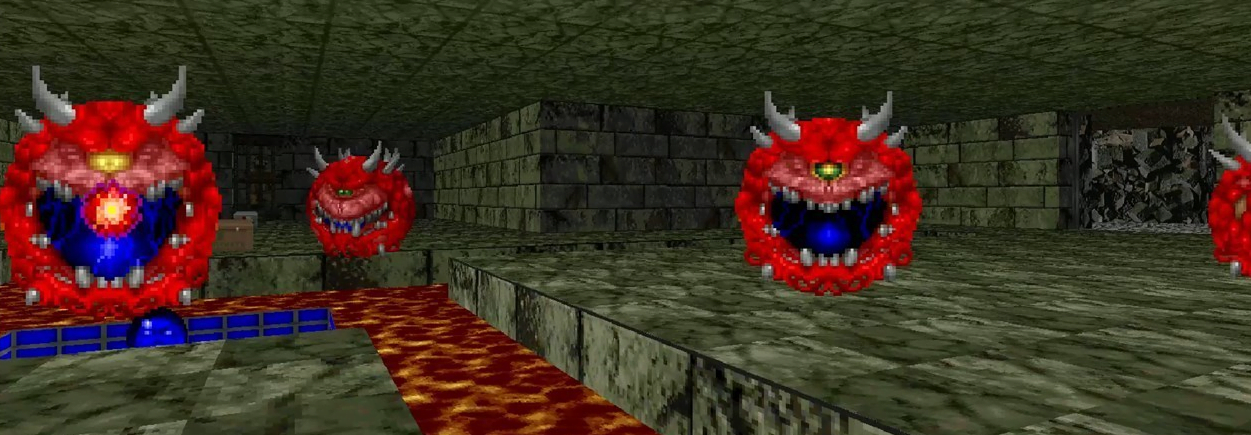
Sandy Peterson is probably one of the most important people in (White, English Speaking, 90s-to-Now, Existing-Power-Structure Centric) gaming. A tail-end boomer, Peterson has been working in gaming since 1974, when he was 19 years old and he’s pretty much never stopped, just moving laterally into new, interesting spaces to work. He’s worked for Chaosium, producing Call of Cthulhu material and Runequest material, and if you don’t know what that is, ask the older bearded guy at your gaming circle who periodically mentions ‘fumble tables.’ He moved into videogames, where he worked on Sid Meier’s Pirates! and the absolutely terribly underappreciated Hyperspeed and Darklands, games that are of the vintage where Civilisation 1 advertises them in its closing screen. Then he moved into working for id Software, where he worked on Doom and Quake then he helped out Raven Software with level design on Hexen and hey that’s enough vital influence of an entire media form, let’s move across to work on Age of Empires stuff with Ensemble Studios, and while we’re in the neighbourhood, why not make stuff for Halo Wars with all that experience you had stored up? Then he moved laterally into board games, where he kickstarted, successfully, the absolute titan in a box of a game that is Cthulhu Wars, the rare kind of game that wants to step up to the challenge Twilight Imperium leaves and actually fights it.
In summary, Sandy Peterson has been responsible for three of the biggest success stories in three different fields; the longstanding Call of Cthulhu tabletop game, the world-shaking Doom, and the record-setting Cthulhu Wars. That’s just three big impacts in three fields, and the thing is, if you took all three of those away his second tier success stories are still titanic impacts. His work shows up in media where he needs to do a lot of direct work rather than just tell people what to do (Kojima).
This isn’t the whole of his work (he made a movie? Kinda?) but it’s certainly the bulk of it. And I haven’t combed the man’s twitter or nothing, but, amazingly, as far as I can find, he hasn’t said anything to fucking embarrass me for thinking well of him.
Yet.
Like I said, I haven’t combed his twitter.
And far be it from me to say that a Mormon man born in the 1950s might be Wholesome Content Bean Uwuguu, but he did say something, a long time ago, that helped me handle a complicated problem that had been put in my head. The issue was that I was at the time in my childhood, grappling with the ways that media that depicted terrible things might be affecting me; that the nightmares I had and obssessions I got over videogames with dark elements in them were a sign of some dreadful sin inside me. One day, while reading a proto-website known as a ‘magazine,’ I found a quote from Sandy, in an article describing the DOOM team, and how he reconciled his faith (which was much less conservative than mine at the time) and his involvement in the creation of DOOM:
“They’re the bad guys.”
Yes, this is obvious. Yes, this is ridiculous. Yes, this should only really be enlightening to a ten year old.
But in my defense, I was ten.
DOOM creates a universe where demons and hell and lovecraftian unknowable, undecipherable, deliberately inexplicable evil are real. And it is a universe where you can meaningfully destroy it with a shotgun to the face.
Doom is great and part of why it’s great is a Mormon Lovecraft fan.
EDIT: hi, it’s Talen from the future, turns out Sandy decided to mouth off about trans people during the 2020 Tokyo Olympics in 2021 and the result was showing he’s a tool about that, so that’s a bummer.
Game Pile: Scarlet Hollow
You can check out Scarlet Hollow on Steam right now, and its kickstarter is here.
3.5 Memories: Okay, Fine, Let’s Talk About Zceryll
Back during August, I looked at the Tome of Magic, a 3.5 D&D book, which involved looking at the the Binder. The Binder was one of the classes presented in that book, where the basic idea was that the binder had these things, called Vestiges, that you could sort of cold-swap between to get different abilities based on your different needs; the task of swapping character mode was fast enough that you could do it between encounters, or on the far side of a dungeon door, or hurriedly while the guards are on their way, but it wasn’t something you could hot-plug in between combats. The Binder was a weak character class by default that could, with its variety of options, hot-swap into a form that was usually about as good as a rogue with most of the gear they want.
Note those italics.
When it comes to D&D content, Wizards put things in the books, but they also made a thing of web expansions – pdfs and website content that you could add to your game, stuff that came from the Official Source and was generally made to be safe enough to include in any game, and that is where we got the Vestige that on its own takes the Binder from ‘incredibly fair, even a bit weak’ to the upper tiers of power, brushing in the shadow of the wizard and cleric.
And bonus, that Vestige is spooky.

The actual text of the Vestige of Zceryll, from Wizards’ own web expansion, is pretty simple:
Zceryll was a mortal sorceress who communed with alien powers from the far realm. She became obsessed with immortality, seeking out the alien beings in the hopes of learning their eternal secrets. When she died, she became a hideously twisted vestige, forever seeking to re-enter the Realms via numerous artifacts she dispersed across the world. Zceryll grants you the ability to transform your body and mind into an alien form, granting you telepathy, resistance to effects related to insanity, the ability to summon pseudonatural creatures, and the power to unleash bolts of pure madness.
Okay, how is it broken? What’s it do that’s so good, power-wise? Normally when you talk about character power, you can usually point to something as a general rule – like you can point to the wizards’ spell list and that’ll explain itself. In Zceryll’s case, what you get when you channel this Vestige is:
Summon Alien: You can summon any creature from the summon monster list that a sorcerer of your level could summon. Any creature you summon with this ability gains the pseudonatural template. Thus, at 10th level you could summon any creature from the summon monster I-V list. When you reach 14th level, you can summon any creature from the summon monster I-VII list. You can only summon creatures that can be affected by the pseudonatural template. Once you have used this ability, you cannot do so again for 5 rounds.
Let’s simplify that: You can use Summon Monster (Half Your Level) every five turns at will. DMs may make you spend the action to do it, in out-of-combat ways, but at will summons is incredibly strong, not because you can flood the battlefield, but because summons are combat capable creatures that in many cases can cast spells. So every utility power available to any monster on the summon list is available to you, but in a spooky way. Need something big moved? Summon something big and stronk. Need to get out of a cage? Summon something that can move through walls. Need to wreck shop on the battlefield? Well at every tier, there’s a piece of cannonfodder you can dump on the battlefield and then not have to spend actions commanding. If your summon runs out of healing magic, you can just summon another one and get it to do the healing magic. If your summon is beat up, you can summon another one and get that to replace the other. It is one of the most startlingly effective spell families to have at-will access to, and the only real drawback for the Binder is that it’s a bit slow.
The actual theme of Zceryll is a weird one, and it bums me out a little that the Binder is a class ostensibly built around this variety of flavour choices, when every powerful Binder is going to be hard on Zceryll and the skills required to be good at managing Zceryll. It’s also frustrating because the name Zceryll is a person’s name first; the odd, hard to express mangled language of the name isn’t a language from outside reality – it’s someone’s name, a weird name, but it’s just… a weird name. It speaks of a culture that’s not common to you now, but Zceryll is still just a person, it’s not an extrusion of a reality where they don’t have vowel sounds.
I feel this is a dropped ball with Zceryll. At its root, it wants to be Lovecraftian; the powers are from the far realms, it’s about a refugee of our reality trying hard to get back in, it’s got this sort of lurking threat to it, and it shows you tearing reality open and letting in things that look like stuff you already know but which are definitely not, while you cast literal bolts of madness from your hand... and then disappointingly, it’s just… a wizard, like you, who drank of the outside.
My advice, if you’re going to use Zceryll in your game worlds? Soak in the eerie. Don’t say it was a wizard who started out researching the far realm. Make Zceryll something not someone.
Lovecraft Readings #1: Facts Concerning the Late Arthur Jermyn

This month I’m going to take some time to read to you my ””’favourite””’ Lovecraft stories, then talk to you a little bit about them afterwards. Because this is Lovecraft, each of these stories deserves a content warning for general horror, but in this one specifically, content warning for suicide, self-immolation, beastiality, racism, racism, racism, racism, racism and racism. I bleep the slur ‘g*psy’ in my reading, and am occasionally unable to contain my exasperated amusement at just how stunningly racist this is.
In the notes on the reading, I mention Atun-Shei Films, and a statement he made in this video.
CoX: Offshore
Time to time, I write up an explication of characters I’ve played in RPGs or made for my own purpose. This is an exercise in character building and creative writing, and hopefully interesting.

There’s a lot of old gods in the deep.
Calling Offshore a sharkboy is true, sure; he’d call himself a Deep One if you asked him to, because that’s the English word his people use for what they are. If you asked where he’s from, he’d say Devil’s Reef, which, yes, is a name for one of the dozens of small, treacherous coves up on the New England coast.
It’s not that that story never happened – though it’s not his Devil’s Reef. It’s that it wasn’t his story; it wasn’t the story of his people, who are as different as other surface people. If you ask him who his people worshipped, he’d tell you a name, then tell you the translation:
Poseidon.
Offshore knows the ocean is important, knows Poseidon’s will is important, and he has a reason to believe that in this City of Heroes, where Greek Gods are seen and echoed all over, there’s a reason for him to be here, rather than down, in the old and glimmering libraries.
Story Pile: The Vault
Conventional visions of horror are about taking the familiar, and adding the unfamiliar. There’s a reason so many horror settings since the 1970s have been focused on the suburban and the conventional being transformed into something dreadful and horrible – and the reason the slashers and monsters in movies so often represent things that we already contend with all the time now anyway. In The Stuff, the horror is the invisible consumption of food culture, in Friday the 13th, it’s the failure of the suburban space to make us safe, and in Camp Crystal Lake Chronicles: Zombie Boy Versus The Sex Havers, the horror is about being punished by adults for arbitary idiocy that has nothing to do with you and them making their emotional damage your problem.
The root, therefore, of modern horror movies, is about things we find relatable, and as the genre has progressed, it’s only a matter of time before you come across a horror movie where the thing it’s infiltrating is another, different type of movie.

Ghost Hunting In Your Head
Ghost Hunting is scary.
In a very literal sense, Ghost Hunting media, where you have people with cameras and recording equipment to some location where ghosts ‘are’ and then get ‘proof’ of them, is a scary business, because it’s a business. There is an economic engine that can monetise the way that these people can spend time and money searching for people and locations to bother and record in the hopes of finding something spooky on camera.
That is, there is an entire business that, as with many other such businesses, wants to make money out of the fact you can be afraid of things, and which encourages you to confront your fear by attributing to it not the scary possibility that your brain is unreliable and can throw out phantom information, but rather that there’s an entire supernatural reality overlaid on ours and it mostly functions through manipulating videocameras and crap radios.

A moment, if you will, of direct empathy with Ghost Hunters. Not all of these people are actively manipulative, film-editing, blatantly exploitative awful shitweasels who are trying to launder their own ability to be mildly convincing into making money off people’s grief and fear. A number of these people are, themselves, credulous and hopeful and want to try and divine something about the world they’re in and often want to explain their feelings and their fear because understanding people is very hard and understanding yourself is extremely hard. The Ryan Bergaras of the space: Sincere believers who are actually scared of ghosts and are doing their best to confront these fears in safe and non-exploitative ways. To those ghost hunters, I must say, well, fine.
They’re a minority.
And almost always, they need to be surrounded by the assholes.
One of the things that hurts your ability to maintain beliefs in this kind of supernatural nonsense is an actual reliable record being kept of what you’re dealing with. If you think you heard a noise that was like a voice, but you can listen to that noise again and again, or recording the audio of an area, it suddenly becomes a lot harder to think ‘that was a voice’ when ‘that sounds like all the other sound in the area.’ We are coincidence seeking machines, and the ‘evidence’ that converts some people is extremely flimsy, often only made into ‘evidence’ by the confirmation of collaborative people, people who are in some cases, incentivised to make sure that you think, yes, that thing you heard is real.
What is real is that brains exist, as best we can prove, and brains do weird things. Brains seek patterns. Brains misrecord. Brains forget things.
And that’s what’s scary.
An entire industry built around keeping you looking for ghosts, so you don’t look inside yourself
Where the real scary stuff is.
An Interview About The Vampires

Brinkwood is live on Kickstarter, now. This is an interview with Erik the Bearik, one of the game’s developers. In this interview, we talk about the game, the things the game is about and the way the game’s values inform its narrative, rather than the typical marketing overview. We mention in this conversation this thread by Orion Black. And this other thread by them, which you should definitely check out.
Game Pile: Halloween Forever
Dread Month 2020!
For the month of October, my Story Pile, Game Pile and general posting will be wound around the theme of dread month. Copying from last year, the reason I’m using dread is because I don’t want to exclude some things: It’s not a horror month; criminal history and real world cult stuff isn’t really horror. It’s not a death month, because, well, death isn’t actually a universal element to the things that creep us out. And sometimes, there are things that are the aesthetic of ghosts and ghouls and scary things but isn’t actually very scary, because it’s being used to some other end.
Halloween isn’t a thing here, and more than normal, this is going to be a year where Halloween isn’t a thing. That sucks, and it sucks that people are going to miss out on a ritual that is renownedly fun. That means for us, this month, being a bit spooky, and indulging in spooky movies and sitting inside and shivering to the chill of scary games and scary media is going to be even more important, because it’s a way we can share the kind of fear we can control.









